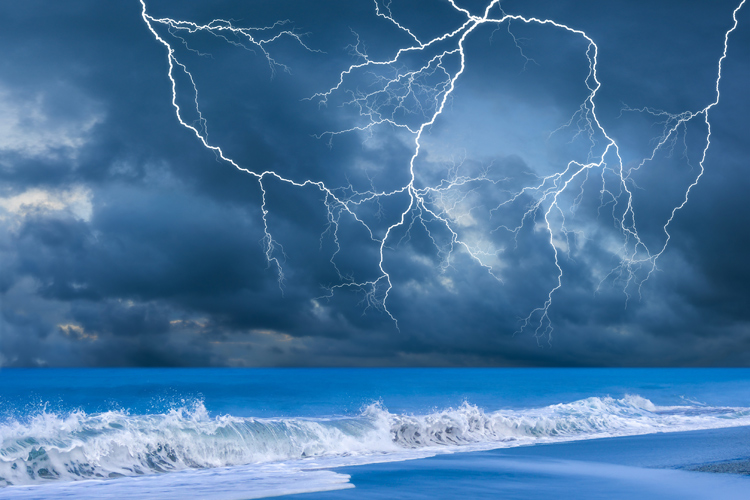Lightning is a natural electrical discharge created by imbalances between a cumulonimbus cloud and the ground or within itself.
Lightning is pure electricity involving small particles with positive and negative charges that pull toward each other like the north and south ends of magnets.
Usually, these positive and negative particles are relatively balanced, but the turbulent winds of a storm can cause them to separate from the cloud.
Researchers do not yet know precisely why both particles separate from each other.
However, some believe that collisions between small hailstones and ice crystals within a storm cause a positive charge in the upper regions, while the lower and middle parts of the cloud gain a negative charge due to the influence of downdrafts and gravity.
In most cases, lightning occurs within cloud formations. Only around 20 percent of all lightning strikes are channeled toward the ground.
However, when negative charges move from the clouds towards the ground (stepped leader), and positive charges move up from the ground (upward leader), and they meet, an electrical current shoots up into the cloud.
In the sky, we observe lightning.
The phenomenon happens so quickly that it seems to travel from the cloud to the ground when, in fact, the opposite is true.
Tall man-made buildings and structures increase the chances of lightning.
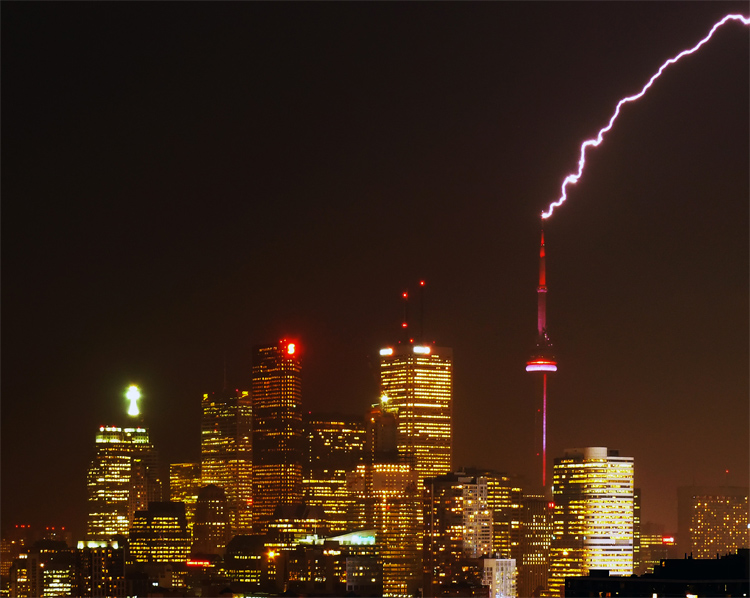
For example, the CN Tower in Toronto, Canada, is 1,815.3 feet tall (553.3 meters).
As a result, the concrete communications and observation edifice is struck by lightning around 75 times each year.
Interestingly, in August 2011, the building was hit by a record-breaking 52 times in 84 minutes.
These brilliant flashes of light also cause thunder.
Although most lightning events occur during thunderstorms, they can also surprise people during volcanic eruptions and summer.
Actually, the lightning season in the United States runs from May through August, when large amounts of tropical maritime breeze move across the country.
The lightning's electrostatic discharge releases up to 1GJ (gigajoule) of energy.
And just because you're far away from a thunderstorm, it doesn't mean you're safe. Cumulonimbus clouds generate lightning strikes that blast outward for up to 20 miles (32.1 kilometers).
Scientists say that the planet witnesses between 50 and 100 lightning episodes per second, even though most of them are not visible to the naked eye.
The most significant concentrations of lightning strikes occur in Central Africa, the Himalayas, and South America.
A bolt of lightning can reach temperatures of roughly 53,540 °F (29,726 °C), which means it is hotter than the surface of the sun - 10,340 °F (5,726 °C).
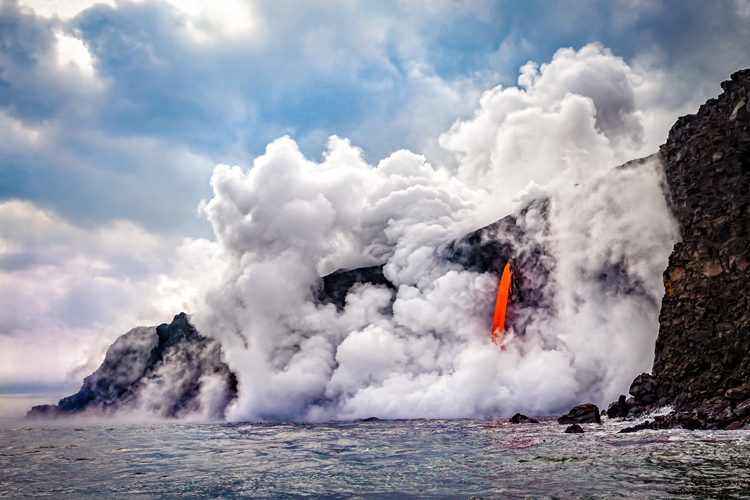
Types of Lightning
Lightning can take six primary forms.
- Normal Lightning: when it travels from cloud to ground, cloud to air, cloud to cloud, or inside the cloud. It is also known as forked or streaked lightning;
- Sheet Lightning: a shapeless flash of lightning that covers a wide area;
- Ribbon Lightning: normal lightning that is blown sideways by the wind in a way that makes it look like parallel, successive strokes;
- Chain or Bead Lightning: lightning that is broken up into evenly-spaced beads or segments;
- Heat Lightning: lightning that can be seen along the horizon during hot weather. It is a reflection of lightning that took place beyond the horizon in a distant thunderstorm;
- Ball Lightning (depicted below): a rare form of lightning that creates a persistent and moving luminous white or colored sphere. It can last from a few seconds to several minutes, and it travels at a walking pace. It ranges in size from four to eight inches (10 to 20 centimeters). In the past, people associated it with spirits or other supernatural events. It can wander in and out of rooms and sometimes leaves holes in doors or windows;
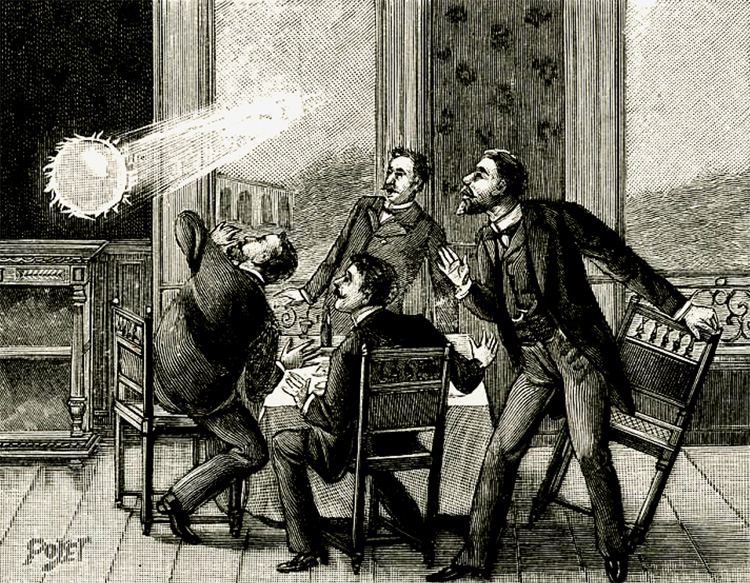
The Difference Between Lightning and Thunder
People often confuse lightning with thunder. To put it simply, lightning is electricity; thunder is sound.
In other words, lightning is the sudden flash of light spotted in the sky, while thunder is the roaring, cracking sound that is commonly heard during thunderstorms.
And because light travels faster than sound, lightning is seen before thunder can be heard.

The Lightning Distance Calculator
It's extremely easy to calculate the lightning distance. All you need to memorize is the famous flash-to-bang technique.
To know how far the lightning is, all you need to do is count the seconds between lightning and thunder and multiply it by the speed of sound.
Here's the formula:
- The Storm Distance = Time Between Lightning and Thunder x The Speed of Sound (0.21 miles per second or 0.34 kilometers per second)
Here's an example:
- 1.49 miles or 2.40 kilometers = 7 seconds x 0.213 miles per second or 0.343 kilometers per second
To make it easier, you can also divide the time between flash and thunder by five to get the distance in miles or divide it by three to get the distance in kilometers.
The result will not be as precise as the formula, but it will give a fairly accurate idea of the distance.
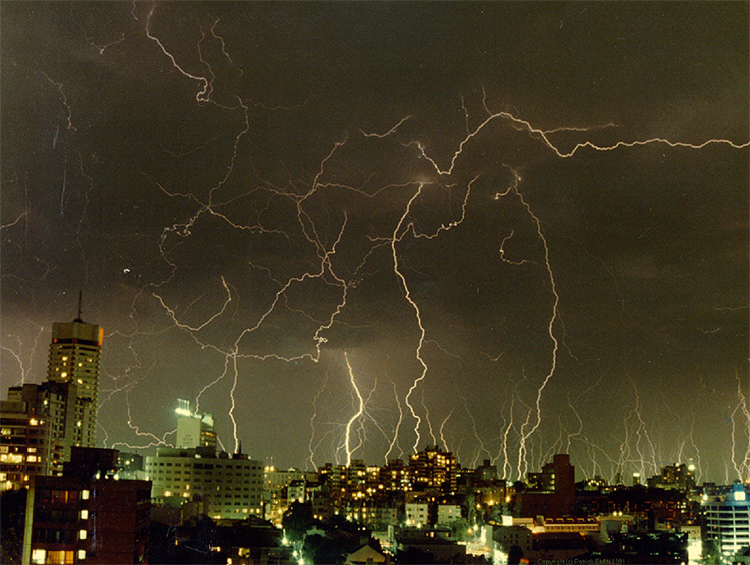
Death by Lightning
Lightning destroys structures and injures and kills people. Every year, there are around 240,000 incidents involving lightning strikes.
These events cause, on average, between 2,000 and 6,000 deaths worldwide.
The chance of a human being struck and killed by this natural phenomenon is between 0.0016 percent (1 in 60,000) and 0.00016 percent (1 in 600,000).
According to NOAA's National Weather Service (NWS), only 10 percent of people who are struck by lightning die. The other 90 percent suffer various degrees of disability.
Between 2009 and 2018, an average of 27 people died each year in the United States due to lightning strikes.
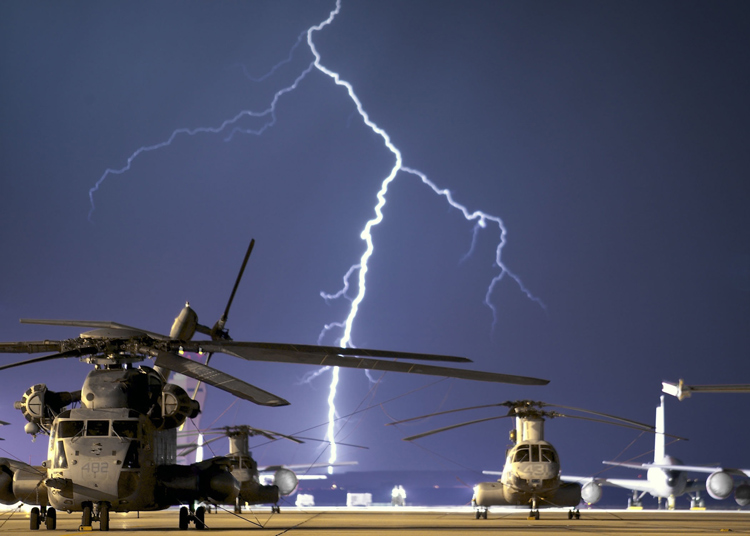
The Worst Lightning Strikes of All Time
In 1769, the Italian town of Brescia was struck by one of the worst lightning strikes ever recorded.
A local church, which was being used to store approximately 100 tons of gunpowder, was hit by lightning, and all the explosives caught fire and exploded.
As a result, nearly 3,000 people died, and one-sixth of the city was damaged or destroyed.
On June 26, 1807, a lightning bolt hit a gunpowder factory in Luxembourg, killing more than 300 people.
In 1963, a Pan Am aircraft suffered one of the worst lightning strikes involving aviation.
An airplane that was getting ready to land in Philadelphia was struck by lightning, and part of the wing tore off.
As a result, the fuel tank ignited, and all 81 passengers and crew on board were killed.
On July 13, 1977, a line of thunderstorms formed north of New York City.
At around 8:30 pm, several powerful lightning strikes hit two Consolidated Edison high-tension power lines. They ignited a chain of events that knocked out the city's power grid and plunged the Big Apple into darkness.
The New York City Blackout, also known as "The Night of Terror," led to subways and elevators that suddenly stopped working, looting, closed airports, and hospitals running on emergency generators for power.
During the summer of 1988, severe drought and high winds hit Yellowstone National Park in the United States.
But when a storm hit the region, lightning struck plants and trees, creating dozens of wildfires that spread and destroyed 40 percent - 750,000 acres - of the park.
In June 2007, a lightning bolt covered a horizontal distance of 200 miles (321 kilometers) across Oklahoma.
In 2012, a single, continual lightning strike lasted for 7.74 seconds in Provence-Alpes-Côte d'Azur in the south of France.
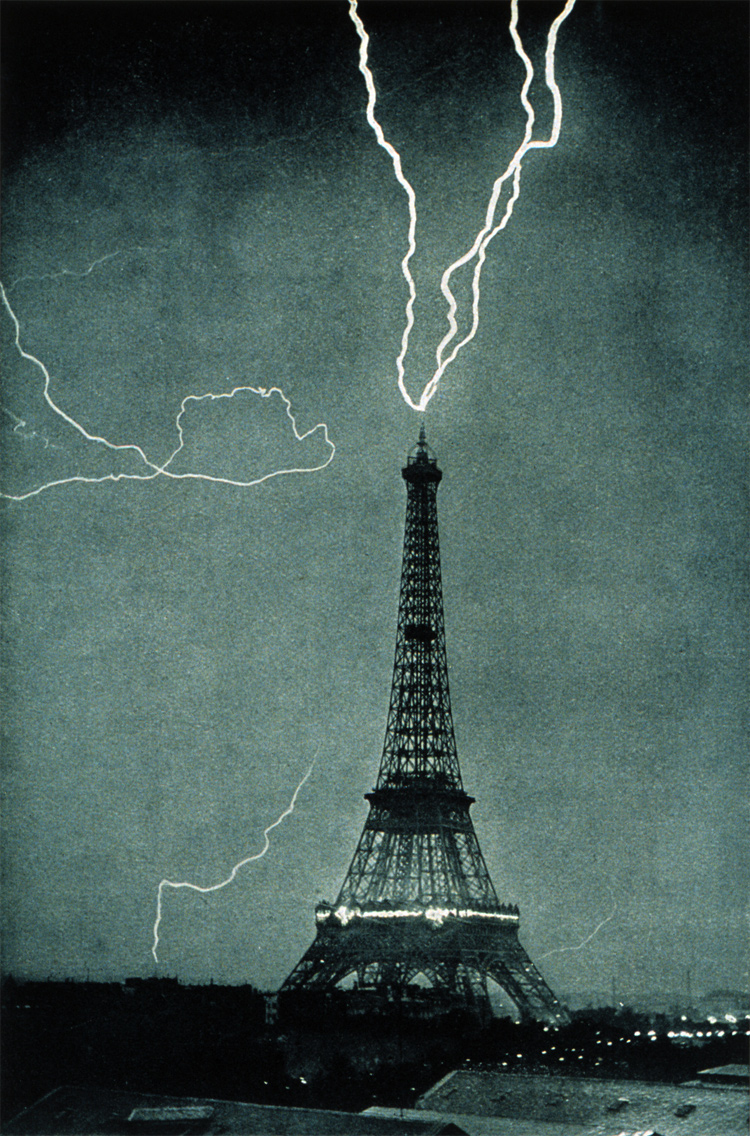
Benjamin Franklin's Kite Experiment and The Lightning Rod
Benjamin Franklin (1706-1790) developed the world's first lightning rod.
In 1752, the Founding Father of the United States of America designed a kite with a key tied to the end of a conductive string.
To the key, Franklin also tied a short length of nonconducting silk cord.
The plan was to hold the silk cord with one hand while holding his other hand near the key. He believed that when lightning struck the kite, a spark would jump from the key to his knuckles.
The experiment took place during a Pennsylvania thunderstorm.
The kite took to the air, a lightning bolt hit the flying device, and sparks flew from the key to Benjamin Franklin's hand.
Despite the dangerous stunt, the polymath proved that lightning is an electrical phenomenon.
Soon after, Franklin realized that an electrical charge could be drained away via a conducting rod buried in the ground.
The lightning rod does not attract lightning - it only transfers energy directly into the soil, sparing buildings from harm.
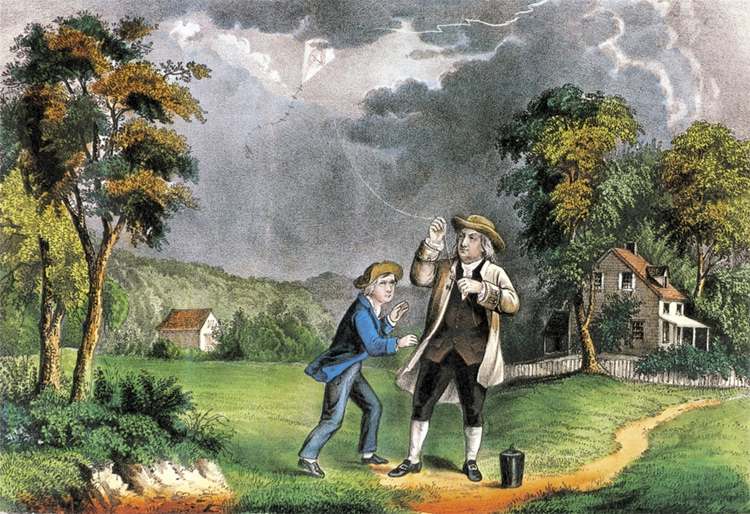
Lightning: Frequently Asked Questions (FAQ)
Did people in ancient times believe lightning came from the gods?
The Romans and Greeks considered lightning bolts to be spears forged by Hephaestus and wielded by Zeus.
In Norse mythology, Odin has a spear made of lightning. In ancient Hindu culture, Indra used a thunderbolt as a weapon.
The Mayans represented their god of creation, Huracán, who was equipped with a triple lightning symbol.
The Romans, the Hindus, and the Mayans also believed that mushrooms would grow in areas where lightning struck.
Does lightning come from ice?
In a way, yes. The electric charge that leads to the creation of lightning is the result of snow and supercooled water droplets rubbing and colliding with each other.
Does lightning only occur during thunderstorms?
Almost always. But it can also be observed during volcano eruptions and, on rare occasions, when smoke gets generated in severe fires.
What does "bolt from the blue" mean?
The popular expression is used to say that lightning strikes can occur when there is no rain, and the skies are sunny. Why? Because there may still be lightning-generating clouds nearby.
Does it have to be raining for there to be lightning?
Not necessarily. But there needs to be a storm.
Does lightning happen during a snowstorm?
Yes. Actually, winter produces powerful lightning strokes.
Am I safe from lightning indoors?
You are safer than being outdoors, but not 100 percent. On rare occasions, lightning may run through pipes and power lines and exit through appliances and plumbing.
Does a lightning rod work?
Yes, absolutely.
Is static electricity similar to lightning?
Yes. The only difference is that the static charge generated when we put on a pair of wool socks and rub them on a carpet is infinitely smaller than the electricity charges produced by lightning.
Is it safe to stand next to a tall object during a thunderstorm?
No. Remember that tall buildings equipped with lightning bolts will transfer electricity to the ground.
Can lightning travel through the ground?
Yes. Electrical energy can travel through the ground from some distance away and injure people and animals through their feet.
Does lightning ever strike twice in the same place?
Yes, absolutely.
What is a fulgurite?
When lightning strikes sandy surfaces, the soil melts into a glassy stone named fulgurite. The largest fulgurite ever found measures 13 feet (four meters) in length.
How bright is lightning?
The light emitted from a lightning bolt is equal to the amount of illumination generated by 100 million light bulbs.
How fast does lightning travel?
The speed of lightning varies from 100 to 1,000 miles (160 to 1,600 kilometers) per second for the downward leader track; the return stroke is 87,000 miles (140,000 kilometers) per second.
Is it dangerous to touch a person who has been struck by lightning?
No, that is a myth.
How many volts are in lightning?
A lightning bolt discharges between 10 and 100 million volts of electricity.
How long is a lightning strike?
The average flash ranges from one mile (1.6 kilometers) to up to 20 miles (32 kilometers).
How many times does lightning strike our planet each year?
Although we're not able to notice over 99 percent of them, around 20 million lightning bolts are generated in the atmosphere every year.
Where is lightning most likely to occur?
Two-thirds of all electrical storms take place in the tropics and more over land masses than over oceans.
What are brontophobia and keraunophobia?
Brontophobia - also known as tonitrophobia - is the abnormal fear of thunder. Keraunophobia is the fear of lightning.
How much energy does one lightning bolt contain?
A lightning bolt has enough energy to light a 100-watt light bulb for three months.
How can you know lightning may be about to strike?
When a mighty static charge begins to build, your hair will stand on end, plastic raincoats start to rise into the air, and cast fishing lines will remain suspended in the air.
During what part of a thunderstorm's duration is there the most risk of being struck by lightning?
Statistics show that more people are hit by lightning strokes toward the end of a thunderstorm only because they tend to get too anxious and go outside.
Are surfers more exposed to lightning than people on land?
Yes, alongside fishermen, ocean swimmers, and beachgoers. Surfers should stay away from the waves during thunderstorms.
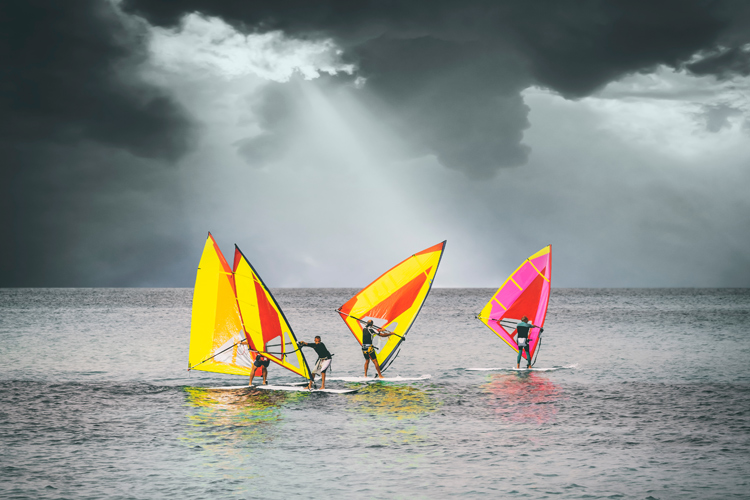
Who was the luckiest person when it came to being struck by lightning?
Roy C. Sullivan (1912-1983), a U.S. Park Ranger, survived seven lightning strikes between 1942 and 1977.
The "human lightning rod" holds the Guinness World Record for a person struck by lightning more recorded times than any other human.
Does lightning have benefits?
Yes. Most lightning-started fires burn fewer than 10 acres of ground, and they help seeds germinate.
Lightning strokes also convert gaseous nitrogen (N2) into nitrates (NO3). Plants need nitrates to survive, and animals get them by eating plants.
Is it true that being hit by lightning can have health benefits?
It has not yet been scientifically proven, but some people who were legally blind claim they regained their vision after being hit by lightning.
Other victims of lightning bolts say they have gained psychic abilities and even did better on intelligence tests after being struck by the bright flash.
What is the "yellow bubble" lightning?
In 1999, two girls from Bristol, England, were playing Frisbee. Suddenly, they encountered a "yellow bubble" of energy that touched them and threw them to the ground.
The girls lost their breath, recovered, and later told the story to the authorities. No one ever understood what happened, but it could've been an unusual form of ball lightning.
Do other planets experience lightning?
Yes, some planets and moons in our solar system have atmospheres. Lightning has been observed on Jupiter, Saturn, Io, and Titan and could exist on Venus.
Who first photographed a sprite?
The first people to shoot a sprite were John Winckler, Robert Franz, and Robert Nemzek.
In 1989, while testing low-light video cameras for use in high-altitude rockets, the University of Minnesota scientists realized they had accidentally captured images of sprites.
When are you most likely to see blue jets and sprites?
At night, when you're far away from the city's light pollution and between 100 and 300 miles (160.9-482.8 kilometers)from a strong thunderstorm.
Blue jets and sprites will appear at an approximate altitude that results from the multiplication of the height of the storm clouds by eight.
What is a thunderstorm?
A thunderstorm is a natural atmospheric phenomenon formed in cumulonimbus clouds that produces heavy rain, thunder and lightning, and sometimes hail.
What causes thunder?
Thunder is sound, and it is created when lightning rapidly heats a section of air. The air expands, compresses, and releases energy as a sound wave.
How loud is thunder?
The boom can be as loud as 120 decibels, the equivalent of a jet plane taking off, a rock concert, or a pneumatic drill.
It is an uncomfortable sound that could be dangerous if exposed for over 30 seconds.
Does thunder cause milk to go sour?
No, that is an old myth.
How tall can thunderstorm clouds be?
A thunderstorm cloud ranges from more than 20,000 feet (6,000 meters) to over 70,000 feet (21,000 meters).
What is the speed of sound?
The speed of sound varies depending on temperature and air pressure.
In dry air at 68 °F (20 °C), sound travels at 0.213 miles per second (343 meters per second) or 766.7721 miles per hour (1,234 kilometers per hour).
Sound also travels faster through water and many other media denser than air.
How far away can thunder be heard?
The cracking sound can be heard at six to seven miles (9.6-11.2 kilometers) distance and, on rare occasions, as far away as 20 miles (32.1 kilometers).
What is Saint Elmo's fire?
Saint Elmo's fire is a sporadic phenomenon consisting of a bright blue or violet glow with an audible electric discharge produced on a single point like a lightning rod, chimney top, or aircraft wingtip.
It was first observed by sailors on their ships' masts. Saint Elmo is the patron saint of sailors.
What is a derecho?
Derecho is a massive, long-lasting thunderstorm characterized by strong wind downbursts.
